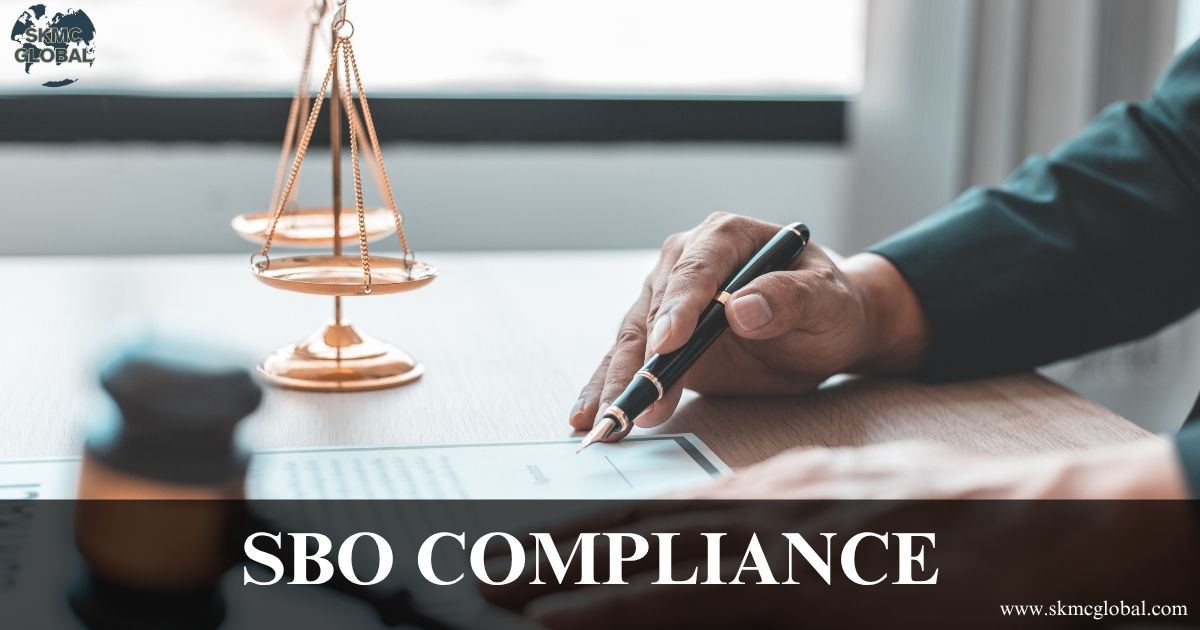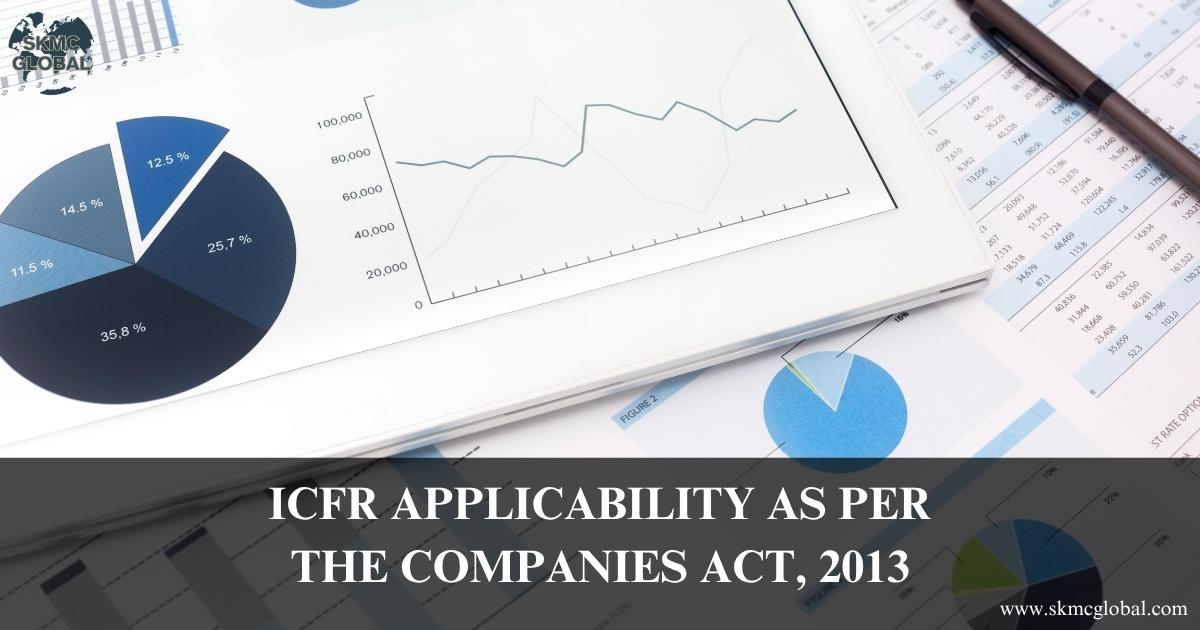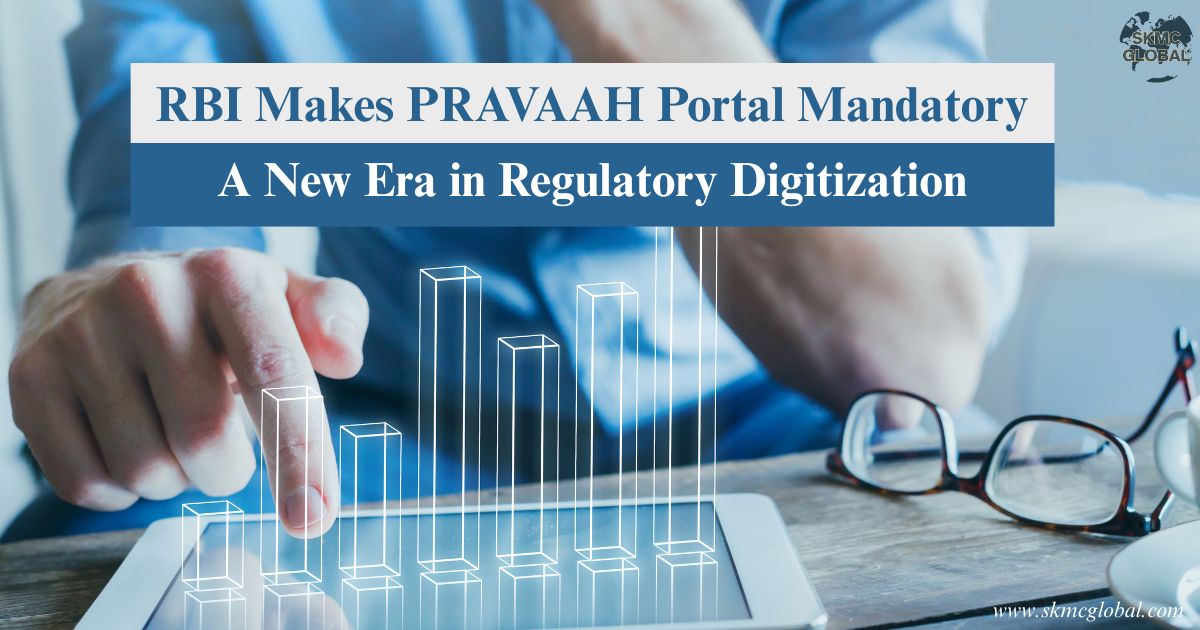
Top 7 Things You Must Know About External Commercial Borrowing (ECB) in 2025
For Indian companies, External Commercial Borrowings (ECBs) are just loans that they receive from lenders outside India. These loans, which can be in foreign currency or even Indian Rupees, are very desirable since they tend to have lower interest rates than domestic ones. This enables Indian businesses to tap into a much larger pool of finance with which to fund large projects, such as building new factories or the expansion of existing ones. In effect, ECB offer an astute and cost-saving means for Indian business to finance the expansion they need to succeed on a global level. Although there are regulations imposed by the Reserve Bank of India to adhere to, ECBs in effect provide a wise and cost-effective means for Indian companies to acquire the capital they require to expand and compete on the international stage. From comprehending the nitty-gritty RBI Reserve Bank of India external commercial borrowing rules to full compliance with ECB in FEMA provisions and the Company Law 2013, a clear grasp is absolutely essential.
What are External Commercial Borrowings (ECBs), Anyway?
In essence, an External Commercial Borrowing is merely a commercial loan availed by a qualifying Indian company by a known non-resident entity. These are not the usual loans from your local bank. They are available in many different forms and sizes, such as:
- Bank Loans: The most frequent type, direct loans from foreign banks.
- Buyers' & Suppliers' Credit: Overseas suppliers or financial institutions' financing for importing goods.
- Bonds: Devices such as Floating Rate Notes (FRNs) and Fixed Rate Bonds.
- Convertible Bonds: Foreign Currency Convertible Bonds (FCCBs) and Foreign Currency Exchangeable Bonds (FCEBs).
- Financial Lease: Foreign lease financing.
The prime objective of ECBs? To augment domestic capital, enabling Indian corporations (from corporates to PSUs) to finance large projects, upgrade facilities, expand operations, and gain access to advanced technology.
Who Is Eligible to Borrow? (Accredited Lenders & Qualified Borrowers)
The ECB RBI regime has vastly liberalized who can lend and who can borrow in the past years.
Tenable Borrowers: In general, any organization that is eligible for Foreign Direct Investment (FDI) can avail external commercial borrowing. This generally comprises:
- Corporates (Companies Act, 2013 registered).
- SEZ units.
- Port Trusts, SIDBI, and EXIM Bank.
- Registered micro-finance institutions (e.g., Not-for-profit companies, societies, trusts, co-ops, NGOs).
Known Lenders: The roster of known lenders has increased too. Fundamentally, any organization in a nation that is Financial Action Task Force (FATF) or International Organization of Securities Commissions (IOSCO) compliant can be a lender. This includes:
- International banks and financial institutions.
- Global capital markets.
- Multilateral Financial Institutions (e.g., IFC, ADB).
- Export Credit Agencies, overseas suppliers, foreign collaborators, and foreign equity holders.
Understanding the "Why": Permitted End-Uses of ECB Funds
The ECB guidelines RBI are extremely specific on how you may (and should not) utilize the proceeds of external commercial borrowing. This is important for being complaint.
Allowed Uses typically comprise:
- Capital Expenditure: A significant category, including imports of capital goods, fresh projects, and modernization/expansion of existing units, particularly in the industrial and infra sectors.
- NBFCs' on-lending: Specific Non-Banking Financial Companies (NBFCs), such as Infrastructure Finance Companies (IFCs), are allowed to utilize ECBs for on-lending to certain sectors.
- General Corporate Purposes: Group companies or foreign equity holders can utilize ECBs for general corporate purposes (including working capital) with a 5-year minimum average maturity.
- Rupee Loan Repayment: In certain situations, especially where the ECB is from a foreign equity investor, it may repay domestic rupee loans availed for capital expenditure.
More importantly, ECBs cannot typically be employed for:
- Real estate operations (with certain exceptions such as industrial parks/SEZs).
- Investment in capital markets or domestic equity.
- On-lending to finance any of the above restricted purposes.
- Speculation.
The Two Lanes: Automatic vs. Approval Channels for ECBs
Raising an external commercial borrowing in India takes one of two routes:
Automatic Route: This is the quicker, simpler route. If your ECB proposal meets all the requirements (minimum maturity, all-in-cost limit, allowed end-use, etc.), your AD Category-I bank can accept it directly. The Reserve Bank of India's prior clearance is not needed. After approval by the AD bank, the information is transferred to External commercial borrowing (ECB) ecb RBI for a Loan Registration Number (LRN).
Approval Route: You will require prior approval from the Reserve Bank of India if your plan does not meet the automated route specifications (for example, exceeding financial restrictions or for certain, non-automatic end-uses). In this case, your AD Category-I bank sends your request to the External commercial borrowing (ECB) RBI, which evaluates it in light of the general external commercial borrowings guidelines, the overall health of the economy and the merits of the specific proposal.
Navigating the Numbers: Key Parameters & Limits
The regulations relating to external commercial borrowings impose a number of key financial standards:
Minimum Average Maturity Period (MAMP): Typically 3 years. However, industrial companies may have a USD 50 million one-year MAMP for ECBs. It is five years for foreign equity holders' ECBs used for working capital, general business needs, or rupee loan repayment.
The total cost Ceiling: It covers the entire cost of the business borrowings (interest, charges, fees, and expenses, minus withholding tax). The RBI establishes ceilings based on maturity and currency. Penal interest for default (up to 2% above contracted rate) lies outside the ceiling.
External Commercial Borrowing Limit: External Commercial Borrowing Limit: As a result of new External commercial borrowing (ECB) guidelines, eligible borrowers can now raise up to USD 750 million (or equivalent) through the automatic route each fiscal year.. This substituted previous sector-wise limits, rendering it considerably simpler for companies.
ECB Liability-Equity Ratio: In case of Foreign Currency (FCY) ECBs from a direct foreign equity shareholder under automatic route, the aggregate ECB liability of the borrower should not exceed seven times the contribution made by the foreign equity shareholder. If the total amount of ECBs is less than USD 5 million, this is exempt.
The Legal Framework: ECB in FEMA & Company Law, 2013
External Commercial Borrowings are mainly regulated by the Foreign Exchange Management Act, 1999 (FEMA), namely the regulations relating to borrowing or lending foreign exchange. ECB RBI introduces Master Directions and circulars under ECB in FEMA to manage foreign currency flows. Sustained strict adherence to ECB in FEMA is crucial.
In addition to FEMA and RBI, businesses raising ECBs have to follow the Company Law 2013:
- Borrowing Powers: Have your company's Memorandum and Articles of Association permit such borrowings, and the board is empowered. Shareholder sanction may be required if borrowings go beyond thresholds under Section 180(1)(c) of the Companies Act, 2013.
- Charge Creation: In case the ECB is secured by Indian assets, this charge should be registered with the Registrar of Companies (ROC) within stipulated time limits under Section 77 of the Companies Act, 2013.
- Disclosure Requirements: ECB information needs to be disclosed by companies in their accounts and annual reports under Company Law 2013.
Latest Buzz & Amendments: Keeping Your Finger on the Pulse
The world of external commercial borrowing is ever-evolving. Here's what's been transpiring up to mid-2025:
- Highlights of the SBI Report (September/November 2024 Data): According to a recent SBI assessment, ECBs remain a significant source of funding for Indian corporations. Indian companies owing $190.4 billion in outstanding foreign loans as of September 2024.Looking ahead to November 2024, there's another $33.8 billion worth of new foreign loans that Indian businesses were in the process of getting approved. This means businesses are continuing to actively seek and get money from outside India. The good news is that ECB interest rates became even more attractive in November 2024 when they dropped to 5.8%!
- Hedging Focus: The Reserve Bank of India highly promotes hedging currency risk. Prudent private companies are hedging around 74% of their ECB exposure. Borrowers should have board-approved policies for risk management and target 100% hedging (financial or natural) to mitigate exchange rate risk.
- ECB Data Clarification: RBI has taken proactive steps to clarify reporting differences, especially the error of Foreign Portfolio Investments (FPIs) being incorrectly categorized as corporate ECB liabilities. This points towards precise submission of data.
- Transition to Domestic Financing: Domestic finance is becoming more and more prominent, notwithstanding the importance of ECBs. A balanced funding approach is encouraged by the minor decline in ECB registration as a proportion of GDP (from 1.9% in FY20 to 1.2% in FY24), which suggests improved local financing availability.
Conclusion
External Commercial Borrowings present a thrilling prospect for Indian companies to secure global capital, perhaps more economical finance, and hedge their sources of financing. But it is all contingent upon an in-depth knowledge of the external commercial borrowing regulations and rules, strict compliance with ECB RBI guidelines and ECB in FEMA, and strict management of currency and interest rate risks. By remaining informed about the most recent developments and industry trends, your company can tactically use ECBs to tap new growth avenues and enhance its international position.
For professional advice on External Commercial Borrowings and maximizing your funding strategy, look up www.skmcglobal.com. Our experts offer personalized solutions for your specific business requirements.
Recent Posts
-
 How to Get CTE and CTO under Environmental Laws in...
Nov 27,2025
How to Get CTE and CTO under Environmental Laws in...
Nov 27,2025
-
 Step by Step guide for appointment of Independent ...
Nov 06,2025
Step by Step guide for appointment of Independent ...
Nov 06,2025
-
 Liaison Office vs Branch Office: A comparative ana...
Sep 02,2025
Liaison Office vs Branch Office: A comparative ana...
Sep 02,2025
-
 Role of Shareholders Agreement in Startups and Inv...
Aug 30,2025
Role of Shareholders Agreement in Startups and Inv...
Aug 30,2025
-
 Setting Up a Wholly Owned Subsidiary (WOS) in Indi...
Aug 12,2025
Setting Up a Wholly Owned Subsidiary (WOS) in Indi...
Aug 12,2025
-
 Arbitration v/s Litigation in India...
Aug 05,2025
Arbitration v/s Litigation in India...
Aug 05,2025
-
 Declaration of Dividend under Companies Act, 2013...
Aug 02,2025
Declaration of Dividend under Companies Act, 2013...
Aug 02,2025
-
 What is MSME Form 1 and how it can be filed?...
Aug 01,2025
What is MSME Form 1 and how it can be filed?...
Aug 01,2025
-
 What is CSR and how to compute the contribution am...
Jul 31,2025
What is CSR and how to compute the contribution am...
Jul 31,2025
-
 Process for removal of company auditor under Compa...
Jul 31,2025
Process for removal of company auditor under Compa...
Jul 31,2025
-
 What is SBO Compliance and when it is needed?...
Jul 29,2025
What is SBO Compliance and when it is needed?...
Jul 29,2025
-
 Role of Key Management Personnel and their appoint...
Jul 28,2025
Role of Key Management Personnel and their appoint...
Jul 28,2025
-
 Registering a Partnership Firm in India...
Jul 28,2025
Registering a Partnership Firm in India...
Jul 28,2025
-
 Procedure to strike off a company...
Jul 28,2025
Procedure to strike off a company...
Jul 28,2025
-
 sox and internal control...
Jul 17,2025
sox and internal control...
Jul 17,2025
-
 ICFR Applicability as per the Companies Act, 2013...
Jul 15,2025
ICFR Applicability as per the Companies Act, 2013...
Jul 15,2025
-
 Concept of Sweat Equity Shares and its uses...
Jun 25,2025
Concept of Sweat Equity Shares and its uses...
Jun 25,2025
-
 Whether loans and borrowing are considered as depo...
Jun 18,2025
Whether loans and borrowing are considered as depo...
Jun 18,2025
-
 What are the major compliance for unlisted compani...
Jun 05,2025
What are the major compliance for unlisted compani...
Jun 05,2025
-
 A Guide to Compensation to Director in Indian Corp...
Jun 04,2025
A Guide to Compensation to Director in Indian Corp...
Jun 04,2025
-
 Loans to Company Directors- A Legal and Ethical Fr...
Jun 04,2025
Loans to Company Directors- A Legal and Ethical Fr...
Jun 04,2025
-
 Top 7 Things You Must Know About External Commerci...
May 16,2025
Top 7 Things You Must Know About External Commerci...
May 16,2025
-
 Integrating CSR into Your Business Model:A Step-by...
May 14,2025
Integrating CSR into Your Business Model:A Step-by...
May 14,2025
-
 What are the applicable Labour Laws in HR (Human R...
May 14,2025
What are the applicable Labour Laws in HR (Human R...
May 14,2025
-
 Unveiling the PRAVAAH Portal: A Comprehensive Guid...
Apr 18,2025
Unveiling the PRAVAAH Portal: A Comprehensive Guid...
Apr 18,2025
-
 FLA Return and its compliance...
Feb 08,2022
FLA Return and its compliance...
Feb 08,2022
-
 Process of closure of Branch office in India...
Dec 30,2021
Process of closure of Branch office in India...
Dec 30,2021
-
 Steps to Shut down the Liaison Office in India...
Sep 14,2021
Steps to Shut down the Liaison Office in India...
Sep 14,2021
-
 Procedure for closure of Project Office in India...
Aug 10,2021
Procedure for closure of Project Office in India...
Aug 10,2021
